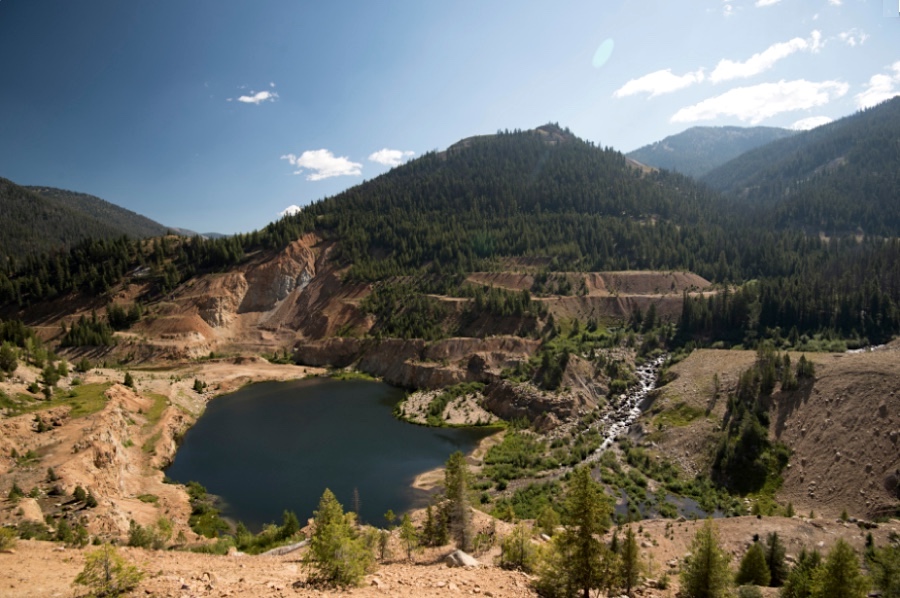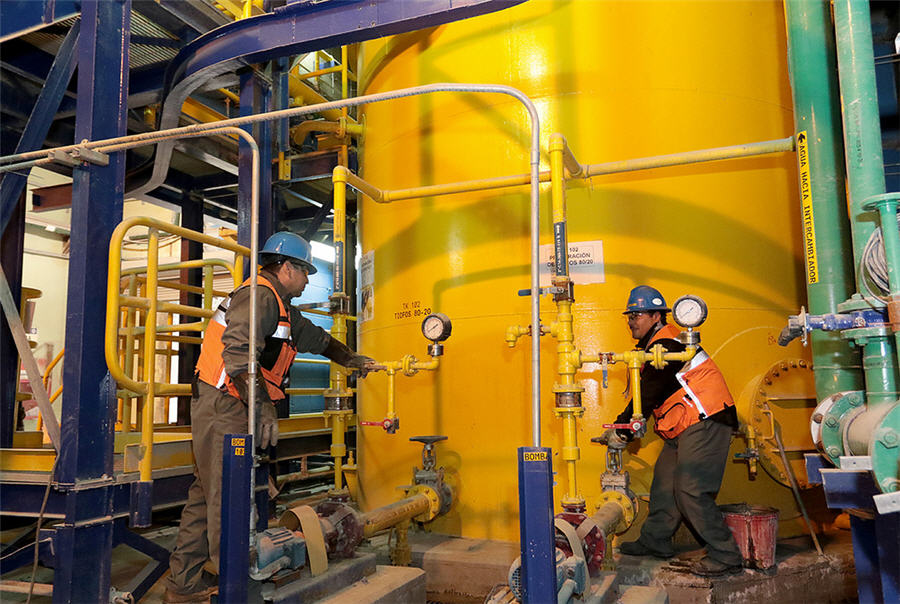Barrick makes further investment in Midas Gold

Barrick Gold (TSE: ABX) is taking part in a bought deal offering by Midas Gold (TSE: MAX) to maintain its pro rata interest in the junior exploration and development company with a gold project in central Idaho.
Midas Gold is offering 33.2 million common shares at C$0.60 per share for proceeds of C$19.9 million, which will be used to advance a feasibility study and permitting at its Stibnite gold project in the state’s Stibnite-Yellow Pine district.
Barrick’s C$4.4 million acquisition of 7.27 million common shares in the latest offering brings its ownership stake in Midas up to 19.9% from its previous 19.6%.
A 2014 prefeasibility study assessed the potential for rehabilitating Stibnite, an existing brownfields site, including the removal and reprocessing of historic gold-silver-antimony tailings and open-pit mining the Yellow Pine, Hangar Flats and West End gold-silver-antimony deposits.
The study envisioned producing gold and silver dore and an antimony concentrate on site at the project, 161 km northeast of Boise, 61 km east of McCall and 16 km east of Yellow Pine.
The project would require extensive remediation of the site, which was mined extensively for more than 80 years.
Gold, silver, antimony, tungsten and mercury mineralized materials were mined in the area starting in the late 1920s, leaving behind many open pits, underground workings, large-scale waste rock dumps, heap leach pads, spent heap leach ore piles, tailings depositories, a mill site, three town sites, and an airstrip, some of which still exist today.
Milling antimony-tungsten and gold sulphides stopped in 1952 due to low metal prices after the Korean War, but mercury operations continued on the Cinnabar claims until 1963.
Exploration resumed in 1974, and between 1982 and 1987, open pit mining and heap leaching occurred on and off depending on the season. Midas started exploration at Midas in 2009.
Work at the project would require and include restoration of fish passage during and after operations, the removal of historic waste rock to an engineered waste rock storage facility, repair of the Blowout Creek channel (a source of significant sedimentation), the reforestation of impacted areas, and other work such as stream channel repair.
Midas estimates Stibnite would have a mine life of 12 years with life-of-mine total cash costs of US$597 per oz. and all-in sustaining costs of $616 per oz
“The ecosystem at the Stibnite gold project is in need of healing,” the company states on its website. “Our plan is as much about restoring the site as it is about mining it…Fish haven’t been able to swim past the historic Yellow Pine pit since 1938, almost no top soil can be found in the area today due to extensive erosion and high amounts of sediment are running into the waterways, degrading water quality and fish habitat. Our plan will address these impacts – and we’ve designed the project so a lot of restoration work will occur early on.”
Midas started exploration at Stibnite in 2009. The project currently has 104.91 million measured and indicated tonnes grading 1.66 grams gold per tonne, 2.53 grams silver per tonne and 0.09% antimony, for 5.6 million ounces of contained gold, 8.54 million ounces of silver and 203.84 million pounds of antimony. Inferred resources add 23.17 million tonnes grading 1.29 grams gold, 2.04 grams silver and 0.04% antimony, for 959,000 ounces of gold, 1.52 million ounces of silver and 20.52 million lbs. antimony.
All of the deposits are open for expansion.
Currently there is no antimony being mined in the US and the country depends on its supply from China, Bolivia and Russia. Antimony, a strategic mineral, is used in the defense, aerospace, and energy industries.
Based on a 2014 prefeasibility study, Midas estimates Stibnite would have a mine life of 12 years with life-of-mine total cash costs of $597 per oz. and all-in sustaining costs of $616 per oz.
The study estimated capex of about $1.23bn, including start-up capital costs of $970 million, sustaining capital costs of $99 million, and closure costs of $56 million.
Payback was estimated to take just shy of three and a half years at a gold price of $1,350 per oz., and the project’s after-tax net present value at a 5% discount rate came in at $832 million and internal rate of return of 19.3%.
As of the end of March, Midas had about $24.6 million in cash.
Franco Nevada (TSX: FNV; NYSE: FNV) purchased a 1.7% net smelter return royalty in 2013 and Teck Resources (TSX: TECK.A; TECK.B; NYSE: TECK) took a 9.9% equity stake the same year.
Paulson & Co. invested $25 million in March 2016 and Barrick invested $38 million in May 2018.
Late Tuesday Midas shares were trading at C$0.61 within a 52-week range of C$0.56 and C$1.11.
The company has about 237 million common shares outstanding for a market cap of about C$144.7 million.
This story first appeared in The Northern Miner
{{ commodity.name }}
{{ post.title }}
{{ post.date }}

Comments
Ryan Beard
Sound like, if they are really going to go forward with these tailing, and remideatiin processes, they will need to invest in re (ISR) storage tanks, and heavy duty inflatable packers may be a flexible solution involved in environmental sound reteival, and remediation of these types of sites.